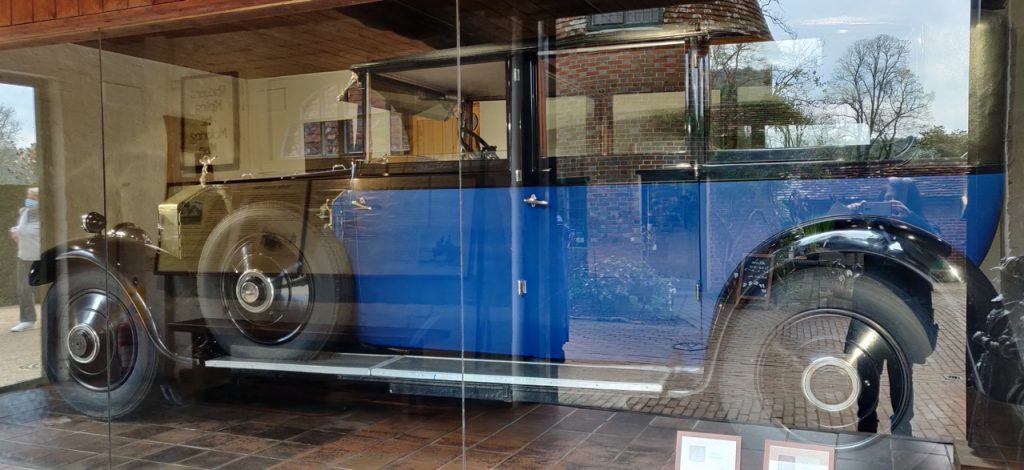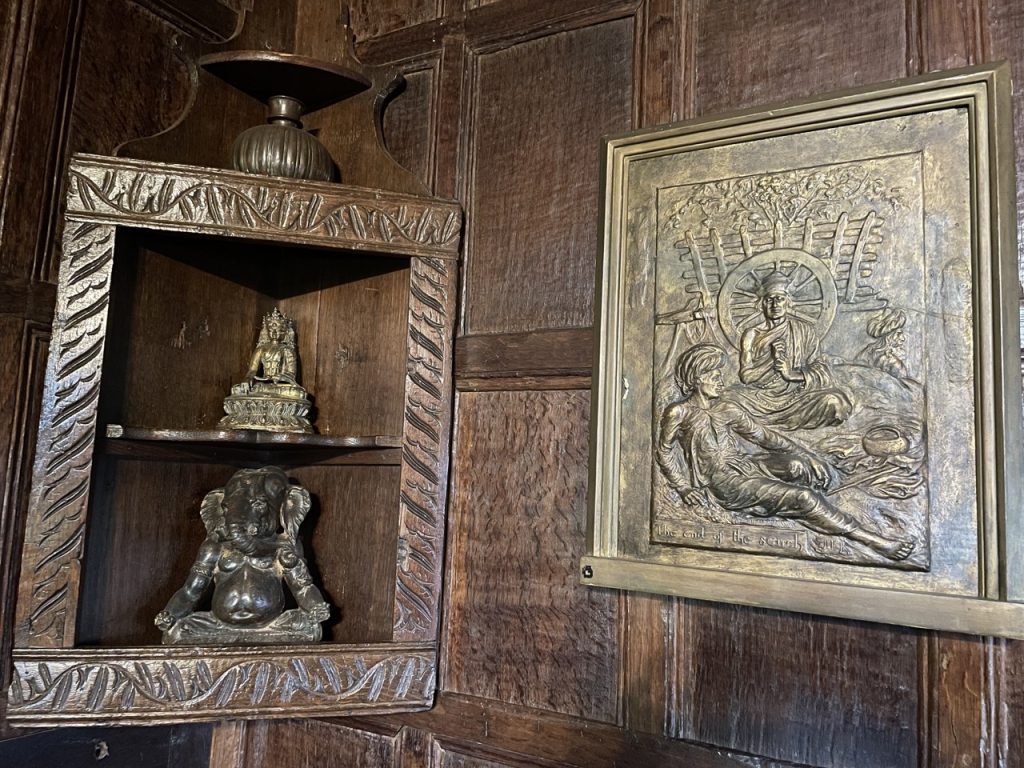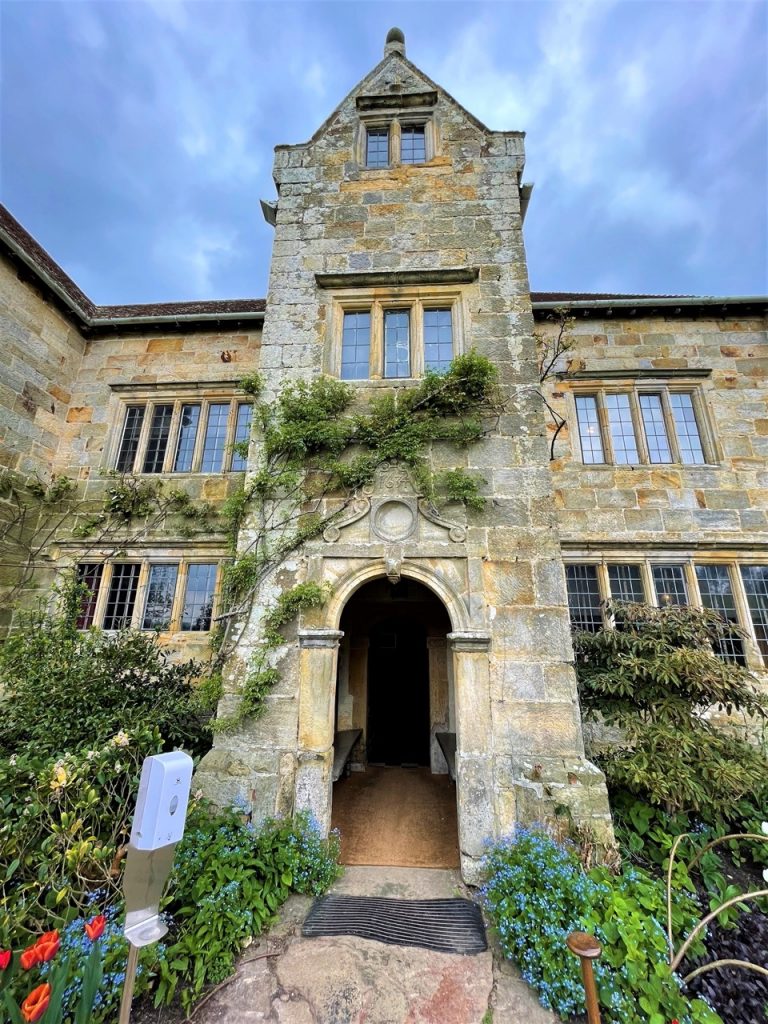Writer Rudyard Kipling from Bombay to England- a Journey
Rows of blossom laden trees with pristine white flowers set upon emerald green grass and a backdrop of sapphire blue sky, on a gentle slope greeted our eyes as we entered the vast gardens of celebrity English writer Rudyard Kipling’s home-Bateman’s. From the car-park we had walked here recalling the words of Rudyard Kipling when he first came here in 1902- ‘he loved the place, its Feng Shui, the rooms had no shadows of ancient regrets stifled miseries nor any menace, though Bateman House’s new end was 300 years old- a real house to settle down!!’ This tranquillity attracted Kipling as we passed the fruit trees orchard with profusion of white blossoms on apple, pear, plums and black mulberry trees.
Rudyard Kipling Birth in Bombay – a voyage
Several photographs later we continued our walk towards Bateman’s house where Rudyard Kipling lived for the last 34 years of his life. Kipling has aroused interest of one and all reader with excellent novels, short stories, poetry and journalism and went on to receive the Nobel prize in literature too!
Born in Mumbai in in Malabar Hills in 1865 he travelled back to England for higher education as some say that he spoke more Hindi than English as a child! As a Journalist he joined Civil and Military Gazette, Lahore in 1882 and moved to newspaper Pioneer in Allahabad and attained fame for his writings. He discovered the Hill town of Simla (Shimla) when his father served in the Christ-Church which became his annual destination during the Summer capital days of the British empire. He termed those months of the years from1885-1888 spent in Simla as ‘pure joy- every golden hour counted’!!
I recalled reading that after dismissal from Pioneer newspaper Rudyard sold his Rights to his 6 volumes of stories for 200 pounds & a small royalty, the Plain Tales from Hills for 50 pounds alongwith 6 months salary; left India in the March of 1889 on a ship to Japan, America and finally returned to England in 1897 with an American wife and daughter! Also, he composed the legendary Jungle Book and so was welcomed into England as a writer of acclaim.
Kipling’s Rolls Royce Phantom car

Kipling loved his Phantom car that gave him a sense of freedom to explore the English countryside Large
From the Orchard-path we first came upon the car shed that held Rudyard Kipling’s 1928 Rolls Royce Phantom as he was a pioneer motorist who loved driving and exploring England by car! There was display of Rudyard Kipling’s stories on motor cars and he compared his car to a time machine in which centuries slid-by as he drove-like a museum where all exhibits are alive!!
Dramatic Porch from 1634
Past more Spring kaleidoscopic flower beds we caught the first view of a Jacobean style sandstone house made way back in 1634 as artistically carved over the tall stone Porch entrance for a London merchant William Langham, initially! Up a stone paved path we entered the Porch while a volunteer lady pointed out the initials of the Kipling family on the left side and the wrought iron Bell-pull that held special childhood memories for Rudyard Kipling.
Kiplings in the Medieval Halls
Next to the Porch is a black and white tiled Hall with dark Oakwood panels and beamed ceiling. We related this medieval room to Kipling family imagining them having hot tea, cakes and scones at the round Hall table. Also, we looked out for the big brass Banaras tray – a wedding gift to the Kiplings and Indian brass fish on wheels toy for their children! Rudyard Kipling mentions this Hall in his story ‘They’ written in remembrance of his daughter Josephine who passed away earlier!
From an Inner Hall we reached the Parlour which was a room for the family and guests to read, write and play parlour games in the evening. Peeping at our brochure we spotted a year 1912 Edison phonogram that played music to add to entertainment in the Parlour. A 17th century peacock-green upholstered sofa caught attention with traditional Oak pieces of furniture.

Black and white tiled flooring with oak wood panelling medieval Dining Hall of the Kipling family in the early 20th century Large
Carved Exquisite Staircase
The Inner Hall holds a beautiful Oak Staircase and most panels date back to 1630’s, some being added by Kiplings. We passed a fine bronze bust of Rudyard Kipling completed after he passed away, a 17th century Brussels Tapestry and an impressive portrait of Rudyard Kipling by painter Colliers from the year1900.

The bronze bust of writer Rudyard Kipling completed after he passed away and the backdrop of original 17th century wooden panelling Large
Mystic Bateman’s First Floor
We were eager to explore the first floor of Bateman’s holding Rudyard Kipling’s Study, Bedroom, Dining room especially the Exhibition room that holds lifelike Reliefs (sculptures on plane surface like a painting) made by his father Lockyard Kipling; a reminder of his Novels and stories- Jungle Book, Just So Stories, Under the Deodars, Kim, Plain Tales from Hills and many more…





